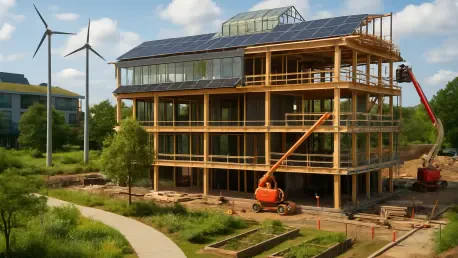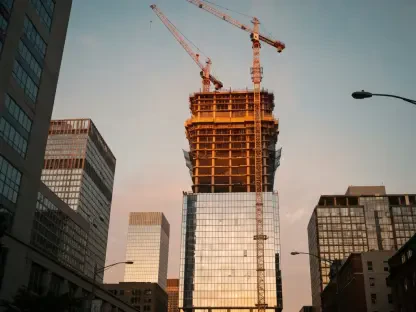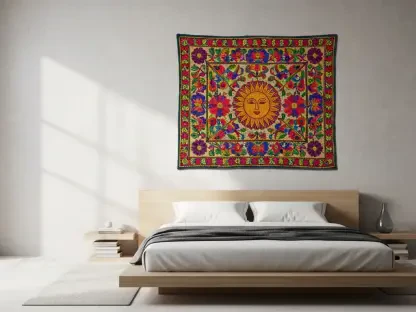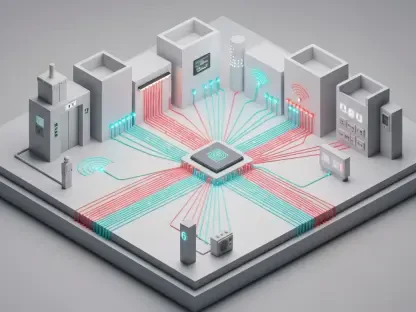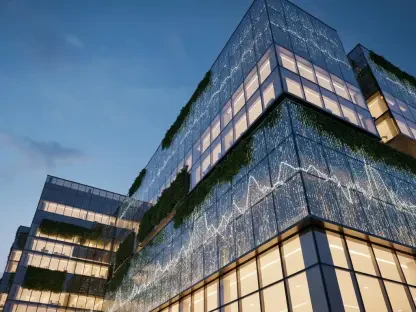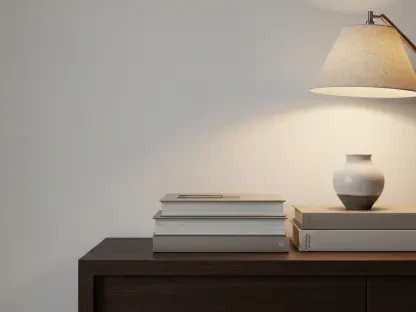In an era where environmental consciousness is paramount in higher education, Western Michigan University (WMU) stands out as a beacon of innovation with its ambitious campus development initiatives. Nestled in the heart of Michigan, this institution is not merely updating its infrastructure but redefining what a modern university campus can be through a steadfast commitment to sustainability and student well-being. With projects that blend cutting-edge construction techniques and thoughtful urban planning, WMU is crafting spaces that prioritize both ecological responsibility and community engagement. These efforts are a testament to a growing trend among universities to address the pressing needs of students while maintaining a sharp focus on long-term environmental impact, setting a powerful example for others to follow.
Pioneering Sustainable Infrastructure
Building for the Future with Golden Oaks
At the forefront of WMU’s transformative projects is the construction of Golden Oaks, a state-of-the-art residence hall slated to welcome students by Fall 2026. Designed to house over 1,000 individuals, this facility introduces pod-style living arrangements with shared common spaces, fostering an environment where connections and camaraderie can thrive. What sets this project apart is its groundbreaking use of mass timber construction, a method that employs engineered wood for structural components and flooring. This approach not only reduces the carbon footprint associated with traditional building materials but also aligns with a broader movement in academia toward greener practices. By replacing the outdated Valley Three residence halls, Golden Oaks marks a significant step forward in modernizing student accommodations while emphasizing sustainability as a core principle of campus development.
The significance of Golden Oaks extends beyond its physical structure to the ethos it embodies. Housing and Residence Life Director Roshona Porter has highlighted the university’s dedication to creating residential experiences that nurture a sense of belonging and support personal growth. This vision is evident in the intentional design choices that prioritize inclusivity and student success, ensuring that the space serves as more than just a place to live but as a foundation for academic and social achievement. As WMU invests in such innovative housing solutions, it addresses the evolving needs of its student body while setting a benchmark for how universities can integrate environmental stewardship into large-scale projects. The impact of this residence hall will likely resonate for years, shaping the campus culture in profound ways.
Embracing Eco-Friendly Materials
Delving deeper into the construction of Golden Oaks, the adoption of mass timber represents a pivotal shift toward sustainable building practices at WMU. This material, known for its strength and versatility, offers a renewable alternative to concrete and steel, significantly lowering greenhouse gas emissions during production and construction phases. The university’s decision to pioneer this method on such a large scale reflects a calculated effort to balance modern infrastructure demands with ecological responsibility. Beyond the environmental benefits, mass timber also contributes to a warmer, more inviting aesthetic within the residence hall, potentially enhancing the living experience for students who will call it home. This project underscores a commitment to not just meeting but exceeding contemporary standards for green construction in higher education.
Moreover, the ripple effects of choosing sustainable materials like mass timber extend to inspiring other institutions and industries to consider similar approaches. WMU’s initiative could serve as a catalyst for broader adoption of eco-friendly building techniques, influencing campus planning trends nationwide. The university is also ensuring that the construction process adheres to strict environmental guidelines, minimizing waste and optimizing resource use. This meticulous attention to detail during the building phase of Golden Oaks illustrates a holistic approach to sustainability, where every aspect of development is scrutinized for its ecological footprint. As this residence hall takes shape, it stands as a symbol of how innovation and environmental consciousness can coexist seamlessly in campus architecture.
Enhancing Campus Accessibility and Aesthetics
Creating a Welcoming Green Gateway
Parallel to the housing upgrades, WMU is reimagining a key campus entryway at 1903 W. Michigan Ave., transforming it into a pedestrian-friendly green space. Already completed, this project has introduced wide walkways, comfortable seating areas, and enhanced landscaping, creating an inviting hub for students and visitors alike. A striking new gateway entrance now serves as a visual and functional centerpiece, redefining how the campus is perceived and experienced. By removing several parking lots near Henry Hall and the University Arena, the university has prioritized walkability over vehicle access, aligning with contemporary campus planning principles that emphasize the importance of green environments. This redesign enhances the overall campus atmosphere, making it more accessible and enjoyable for the entire community.
The transformation of this entryway is more than a cosmetic upgrade; it reflects a deliberate strategy to improve the quality of campus life. The expanded pedestrian zones encourage foot traffic and social interaction, fostering a stronger sense of community among students, faculty, and staff. Enhanced landscaping not only beautifies the area but also contributes to local biodiversity, supporting small ecosystems within the urban campus setting. This initiative demonstrates WMU’s understanding that a university’s physical environment plays a crucial role in shaping student experiences and well-being. By investing in such spaces, the institution ensures that its campus remains a vibrant, inclusive place where everyone can connect and thrive, reinforcing its mission to prioritize student-centric development.
Promoting Walkability and Community Engagement
The green space project at WMU also serves as a model for how universities can balance functionality with aesthetic appeal in campus design. The removal of parking lots to make way for pedestrian pathways signals a shift toward reducing reliance on vehicles, encouraging sustainable modes of movement like walking and biking. This change not only supports environmental goals by cutting down on emissions but also promotes healthier lifestyles among students. The seating areas strategically placed throughout the redesigned space invite casual gatherings and informal study sessions, turning a once utilitarian area into a dynamic social hub. Such thoughtful planning underscores the university’s commitment to creating environments that cater to both individual needs and collective engagement.
Furthermore, the emphasis on pedestrian-friendly design aligns with a growing consensus in higher education that campuses should be spaces of connection rather than mere transit points. WMU’s efforts to enhance accessibility through this green space reflect a nuanced understanding of how physical layouts influence community dynamics. The gateway entrance, with its symbolic and practical significance, acts as a welcoming threshold that sets the tone for the campus experience. This project, completed with an eye toward long-term usability, ensures that future generations of students will inherit a campus designed for interaction and inclusivity. By weaving sustainability into the fabric of its public spaces, WMU continues to demonstrate leadership in redefining what a modern university campus should embody.
Reflecting on a Sustainable Legacy
Looking back, WMU’s dedication to sustainable campus projects like Golden Oaks and the pedestrian green gateway has left an indelible mark on the institution’s identity. These initiatives, completed with a clear focus on environmental responsibility and student well-being, showcase a forward-thinking approach that balances innovation with practicality. The use of mass timber in residence hall construction and the prioritization of walkable green spaces redefine campus infrastructure, proving that sustainability can enhance rather than hinder progress. As these projects took shape, they became enduring symbols of a university committed to nurturing both its community and the planet, setting a precedent for others in higher education to follow with similar resolve.
